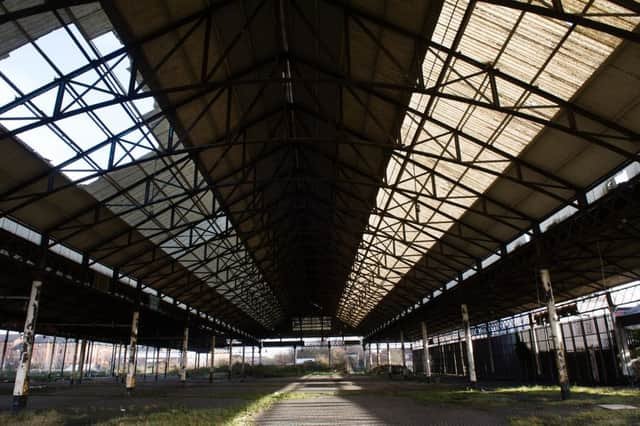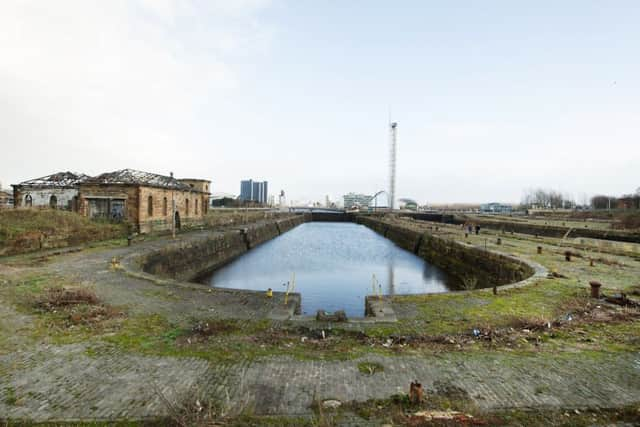Glasgow building up to turning around derelict wasteland


The city is finding new uses for the numerous plots of derelict land that can be found across its boundaries but council chiefs admit there is much work still to be done.
Local authority statistics revealed there was 1144.8 hectares of derelict land in Glasgow in 2015 - a decrease of around 200ha since 2010.


Advertisement
Hide AdAdvertisement
Hide AdMuch of the vacant land is classed as brownfield - land which was previously occupied by industry - which declined in the late 20th century, such as the former abattoir and cattle market in Duke Street or the Graving Docks in Govan.
“There are historical reasons for this high level, but the fact is that too many Glaswegian neighbourhoods are still blighted by derelict wasteground, with all of the additional social and environmental problems that brings,” said Councillor Susan Aitken, leader of the city’s SNP group.
There have been high-profile success stories in bringing life back to some areas in recent years, such as the opening of the award-winning Riverside Museum in 2011. The new home for the city’s famous transport collection was built on the site of the former Pointhouse shipyard, which closed in 1962.
Downstream stands Glasgow Science Centre and the headquarters of BBC Scotland, which were built on a prominent gap site that stood empty for decades, barring a brief spell as the venue for the 1988 Garden Festival.


In 2006 it was reported that 80 per cent of all development in Glasgow was taking place on brownfield sites.
Rising land values before the financial crisis of 2008 led to 800ha of land previously used for industry being turned over to private developers for housing, including the Glasgow Harbour complex and the New Gorbals estate.
But post-crash, a complex pattern of land ownership, funding issues and a lack of private developments led to Glasgow City Council and the Scottish Government to consider other options to bring land back into use. The local authority’s strategic plan commits the council to cleaning up derelict land and turning it into green space or other uses through its Stalled Space initiative.
This scheme encourages the temporary use of vacant land or sites previously earmarked for development where work has stalled.
Advertisement
Hide AdAdvertisement
Hide Ad“In the five years since its initiation, Stalled Spaces has funded and helped implement roughly 110 projects across vacant and underutilised open spaces in the city,” said a Glasgow City Council spokesman.
“These projects range from community gardens to natural play spaces, sports spaces, art spaces and spaces for community events.”
The programme operates on an annual budget of £50,000 - £35,000 from Glasgow City Council and £15,000 additional funding support from Glasgow Housing Association.
Community groups or community based organisations can apply for up to £2,500 for projects based in Glasgow. Stalled Spaces also provides support to groups with community organisation, project planning and implementation of projects.
To date, Stalled Spaces has provided roughly £250,000 of seed funding across projects in the city. Supported projects have been able to secure an additional funding of over £650,000 from other sources and have generated over 25,000 volunteer hours in these projects.
Approximately 25ha of vacant or stalled land across the city has been brought under active use through these projects.
Cllr Aitken said she hoped to see the pace of bringing derelict land back to use stepped up.
“We want to give communities themselves the lead role in deciding how it’s used,” she said.
Advertisement
Hide AdAdvertisement
Hide Ad“Too often, when land is brought back into use, the wishes of local people are treated as marginal. Whether it’s affordable housing, a play park, a community centre or space for small businesses, communities themselves know best what they need.
“The SNP wants to see Glasgow become a beacon council for the new Community Empowerment Act and truly embrace the opportunities for community-led urban land reform that can be found across the city, especially in our most deprived areas.”